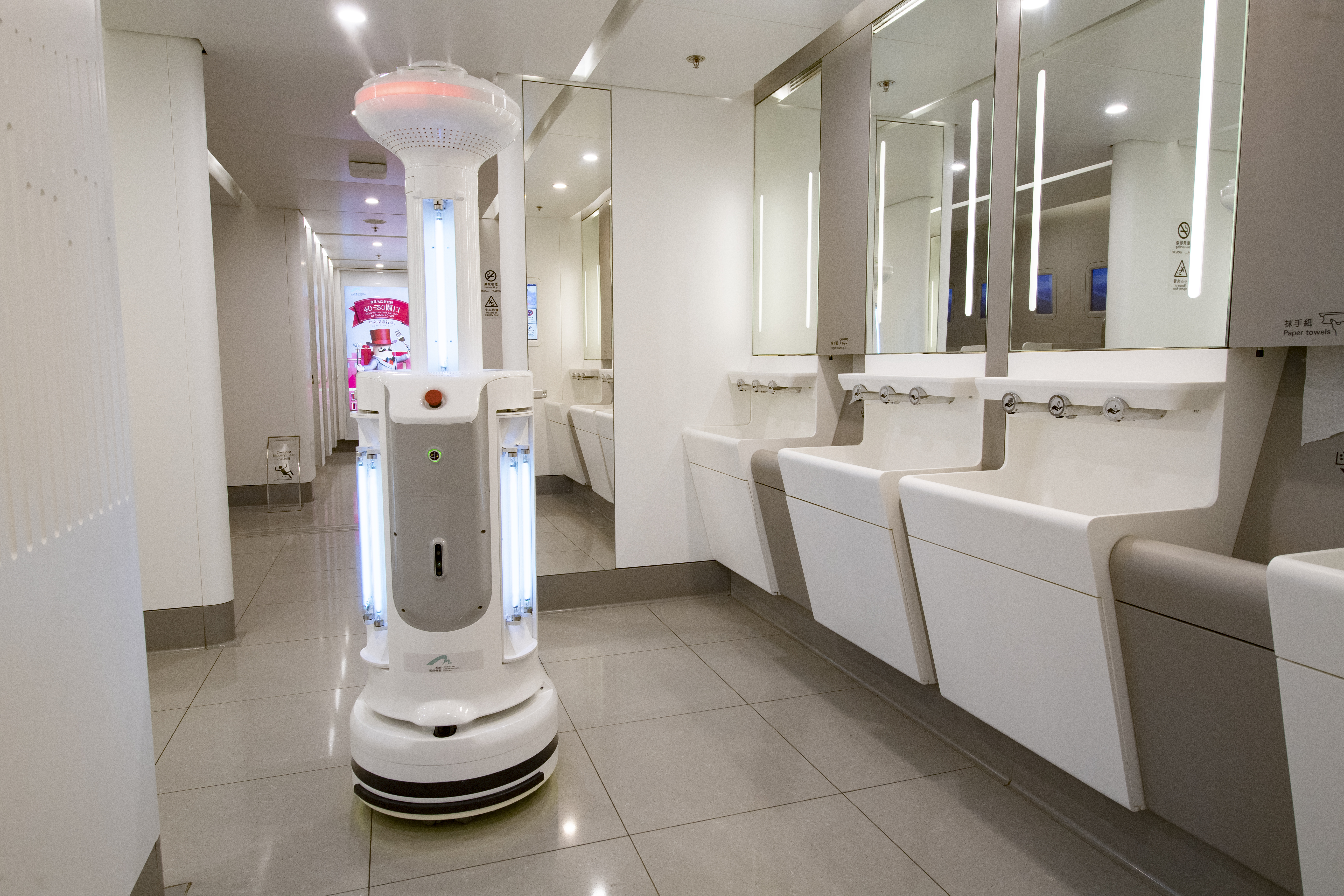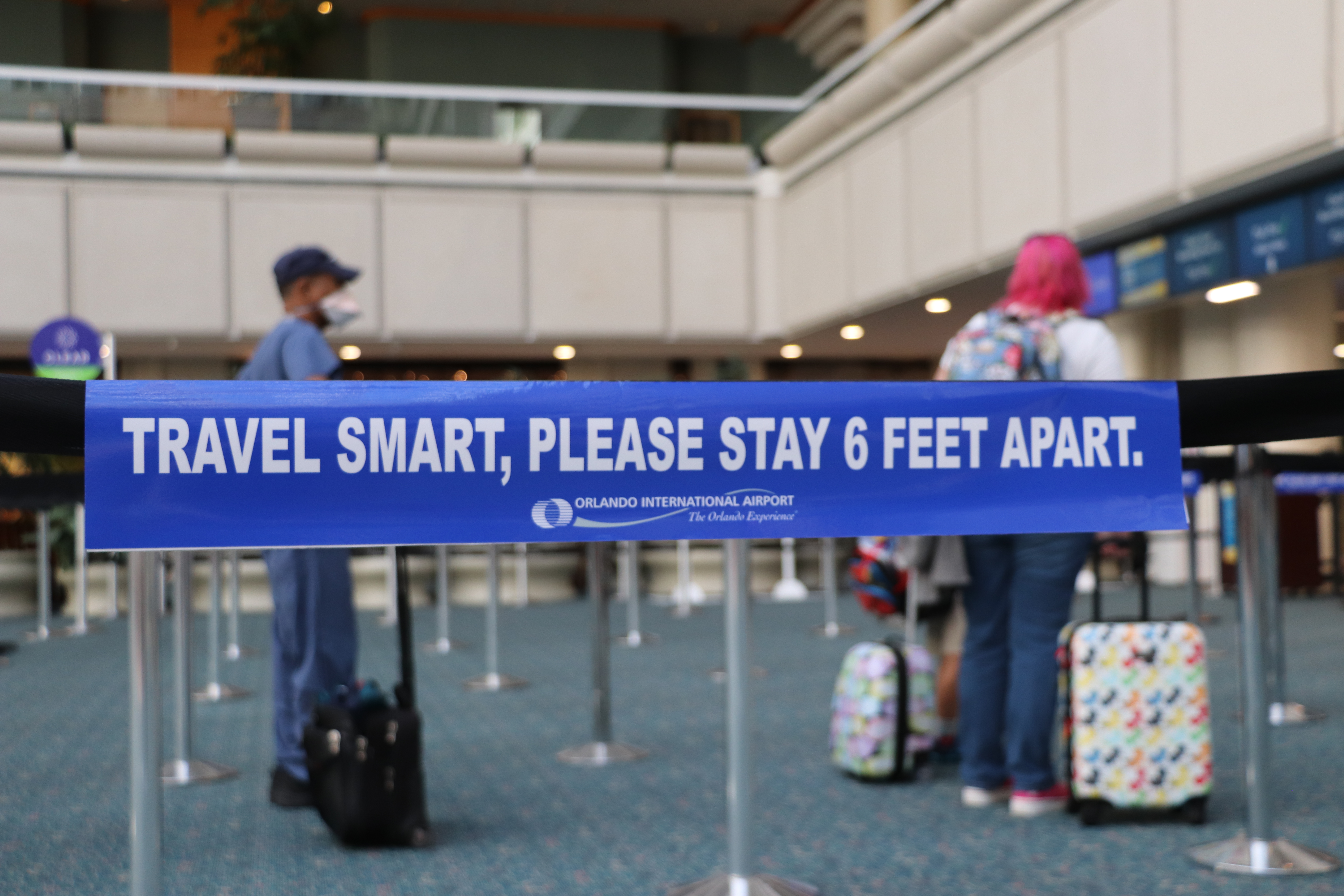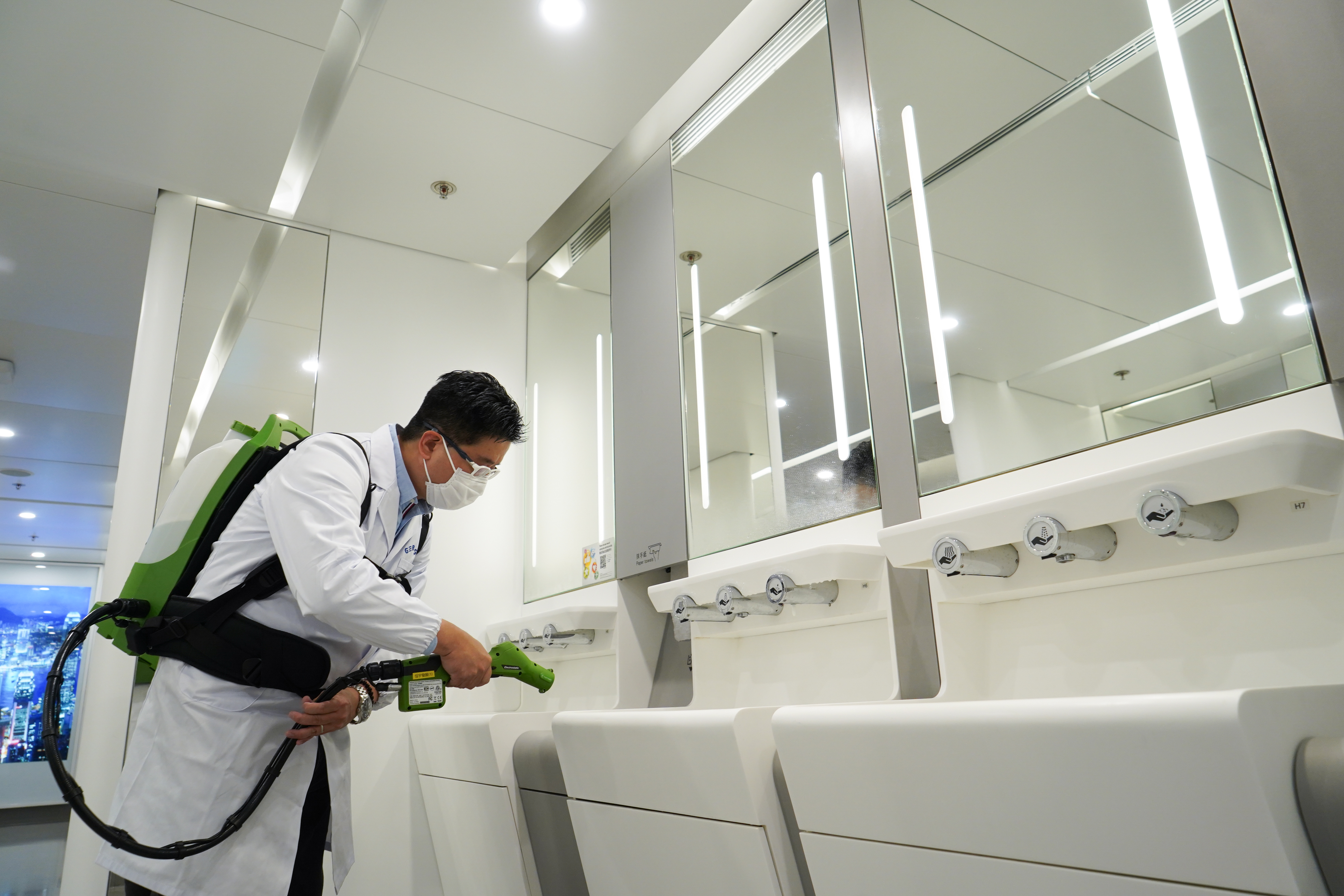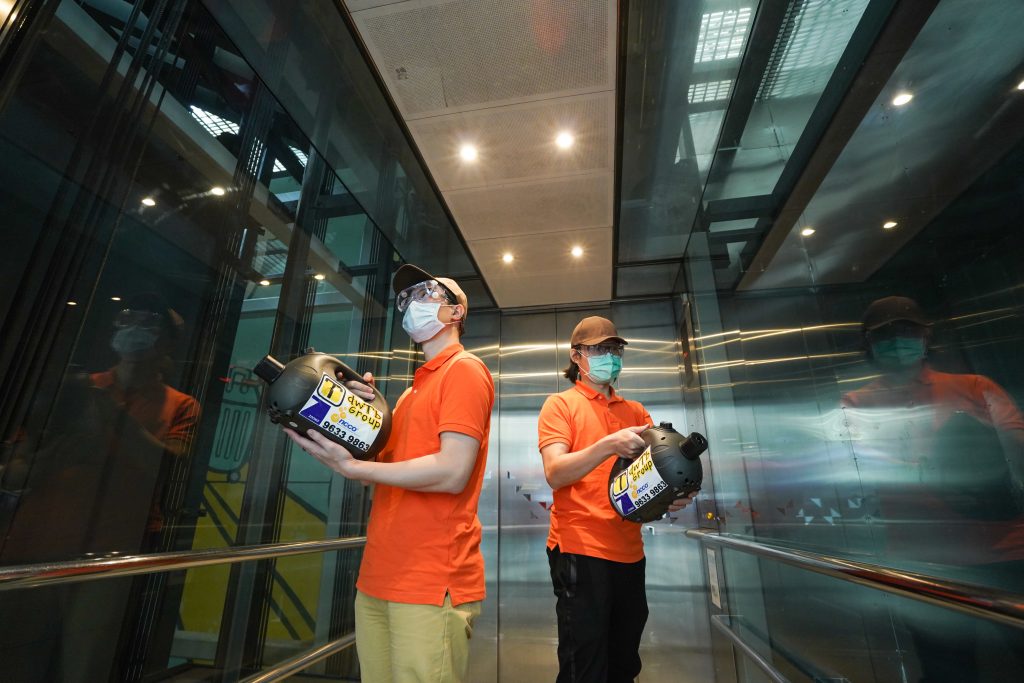The Covid-19 pandemic has given rise to new passenger expectations regarding air travel, with increasing importance put on the safety and hygiene of their journey. As a result, the work of cleaning and maintenance departments is now in the spotlight.
“Our jobs have changed unbelievably since the pandemic began,” says Gary Hunt, director of maintenance at the Greater Orlando Aviation Authority (GOAA). “First, we wanted to ensure the protection of our employees, so had to get everything in place – such as masks – to keep them safe. Then we had to prepare the facilities, in particular the terminals, to address Covid-19 and give passengers the confidence they needed to return.”
Recep Sahin works at the Fraport company GCS – Cleaning Services as operations manager, non-aviation. He agrees that the pandemic has dramatically changed his work: “The pandemic has made cleaning and disinfection an essential part of airport operations. My responsibilities have changed; I now have to supervise a much broader variety of tasks.”
New measures
All airports have stepped up to the challenge of enhanced cleaning, including Tampa International. It introduced its #TPAReady program, which highlighted the steps it was taking to ensure the airport’s safety and readiness to re-open. At its heart was a focus on ensuring the health of both employees and travelers.
“The key driver of the program is making sure our passengers are as safe as possible and feel comfortable traveling,” says Al Illustrato, executive vice president of facilities at Hillsborough County Aviation Authority (HCAA), owner of Tampa airport. “We’ve now got 180 hand sanitizer stations, 275 acrylic barriers at high traffic areas and 5,500 social distancing markers. We’ve invested in additional janitorial crews to clean high-touch areas and procured new technologies such as misters, electrostatic sprayers and autonomous auto scrubbers.”
Across the Pacific, similar cleaning and disinfection efforts have been stepped up at Hong Kong International Airport (HKIA). Frequently touched surfaces are now cleaned and disinfected every hour, and disinfection of boarding gates and airbridges is carried out after each arriving flight.

Similarly to HCAA, the Airport Authority Hong Kong (AAHK) has also been looking into new hygiene technologies. “A pilot test of applying antimicrobial coating at all passenger facilities is currently being conducted. After completion we will consider implementing it as a long-term disinfection measure,” says Vivian Cheung, AAHK’s executive director, airport operations.
Autonomous cleaning robots have also been deployed at HKIA to ensure thorough disinfection of public areas and passenger facilities. “An intelligent sterilization robot, equipped with ultraviolet (UV) light sterilizer and air sterilizer, is deployed around-the-clock in public toilets and key operating areas,” Cheung continues.
“The robot can move around autonomously and sterilize up to 99.99% of bacteria in its vicinity in just 10 minutes.
“Meanwhile, autonomous vacuum sweepers also clean the floor of the airport’s terminal. Apart from enhancing cleaning, they also help boost operational productivity as [human] cleaners can be reallocated to other critical cleaning and disinfection tasks,” she adds.
These facilities are not alone. Around the world airports and authorities are looking at a wide range of technologies, from electrostatic fogging machines employed by Fraport to hygiene tracking technology at Hartsfield-Jackson Atlanta International Airport.
Hygiene standards
Although guidance and advice is on offer for airport hygiene, Kevin Smith, senior vice president of technology for software company Corvado – a provider of cloud-based solutions for cleanliness compliance – notes that there’s no globally defined industry standards for airport cleanliness. He believes these need to be put into place, and shared with the public.
“In many countries a department of health rates restaurants for health and safety,” he says. “Why not communicate to people a similar scored rating in airports? This will comfort passengers, which will hopefully lead them to spending more money in the airport. If they don’t know what’s being done to keep it clean, they’ll just sit nervously trying not to touch anything!”
Steps are being made in the right direction. For example, this July EU member states agreed to common hygiene standards on planes and airports in order to help curb the spread of Covid-19. Measures adopted include mouth-and-nose protection for all passengers from six-years-old, better information for passengers, and compliance with social distancing at airports during security checks and check-in – even if this results in delays or long queues.
In addition, several organizations are now offering awards and certification. In July, for example, ACI World launched the Airport Health Accreditation program to assist airports by assessing new health measures and procedures introduced as a result of the pandemic against global standards.
Fraport, meanwhile, was awarded a ‘Safe from Covid-19’ quality seal from technical inspection organization TÜV Hessen, and Skytrax offers an airport hygiene audit which comes with a rating and certification.
In April 2020, RINA launched its Biosafety Trust Certification, which is a management system certification developed to mitigate the spread of infections in public places. Rome-Fiumicino International (FCO) and Rome-Ciampino International (CIA) were the first airports to receive this.

Based on ISO criteria, the RINA certification takes a risk-based approach. Starting with a main risk assessment, airports identify priorities and put in place prevention and mitigation actions. According to Massimiliano Ghittino, business development manager, RINA UK, the certification puts attention on policies and procedures, and also on staff training, as this is key to ensuring they’re followed correctly. RINA is already in advanced discussions with several more of Europe’s major airports in the UK, Italy and Russia.
But this isn’t the only certification of its kind. GOAA is currently looking into the Global Biorisk Advisory Council’s (GBAC) GBAC STAR Facility Accreditation program.
“This focuses on leadership involvement from the top down,” says Hunt. “There’s a strong training and education program and it looks at where your organization is currently and what we need to do moving forward. We hope to be the first airport in the world to achieve this, but it’s less about the bit of paper and more that we have someone making sure we cover every base.”
Improvements to come
Airports and authorities understand there’s still much work to be done and continue to look at ways to improve their hygiene. For several, this includes looking at leveraging smart technologies in their bathroom facilities; both the AAHK and HCAA are currently looking at enhancing toilet cleaning standards by using smart toilet management systems.
AAHK is also undertaking a terminal toilet revamp project that will include deploying three-in-one basins with touch-free taps, soap dispensers and hand dryers, as well as automated hand towel dispensers and automatic toilet flushing systems.
HCAA’s Illustrato adds, “We have plans to install smart restroom software later this year that will provide insight into restroom cleanliness by monitoring traffic flow in and out of facilities. We can monitor spikes in real time and ensure we get our cleaners to the right place at the right time.”
Illustrato’s team is also looking into UV sterilization and exploring systems that could be installed into escalator machinery and existing HVAC systems to improve hygiene further, and is also currently vying for government money that will implement an even higher cleaning standpoint at Tampa’s TSA checkpoints.
“If we do get the funds, we’ll probably have this in place for the length of the pandemic. It’s a further five clicks up from where we are now, which means it’d be a tough one to maintain for the long-haul,” he notes.
Facilities have achieved a lot in a small time and are keen to share their achievements with the public in order to regain travelers’ confidence. Tampa has done this through its #TPAReady campaign, while Hunt’s team has worked closely with the GOAA PR department to get the message that “Orlando’s ready”.
“We’re using social media, doing interviews, sharing videos of our cleaning processes etc. It’s a matter of continuing to educate the public of what we have in place, what we’re doing and what we’ll continue to do moving forward,” Hunt adds.

Advice center
There’s great stuff happening around hygiene in the airport sector, however health and hygiene experts believe there’s still more work to be done. Dr Lisa Lee, associate vice president for research and innovation at Virginia Tech, recommends reconfiguring doors and high-touch surfaces so they are foot operated or entirely touchless.
The expert’s biggest piece of advice, however, is to ensure they provide basic facilities, information and education.
Christos Nicolaides, a digital fellow of MIT’s Sloan School of Management, believes it’s as simple as just getting people to wash their hands more. “Airports can learn from the health sector, which has appreciated the importance of hand hygiene for a long time. In a hospital you’ll see signs all around reminding you of this. Wash basins need to appear outside of restrooms to increase the capacity for handwashing. There are smart stations out there that offer touch-free handwashing with water and soap – the most effective way to clean hands.”
Jack Lambert, a consultant in infectious diseases and genitourinary medicine at the Mater Misericordiae University Hospital, and an associate professor at the UCD School of Medicine in Dublin, agrees that more needs to be done by airports. “Hygiene consists of wearing a facemask, social distancing and World Health Organization-quality handwashing. I can’t speak for every airport, but from my experience we’re not there yet. We need signs to show people how to wash their hands properly; there needs to be education and information,” he points out.
“The most important measures are still those we’ve recommended from the start of the pandemic: keep a physical distance, wear facemasks and wash your hands frequently. Visual reminders for customers help – use signs and stickers to remind people,” continues Virginia Tech’s Lee. “Until we have an effective treatment or vaccine, these measures are our new normal.”
This article was originally published in the September 2020 issue of Passenger Terminal World.


